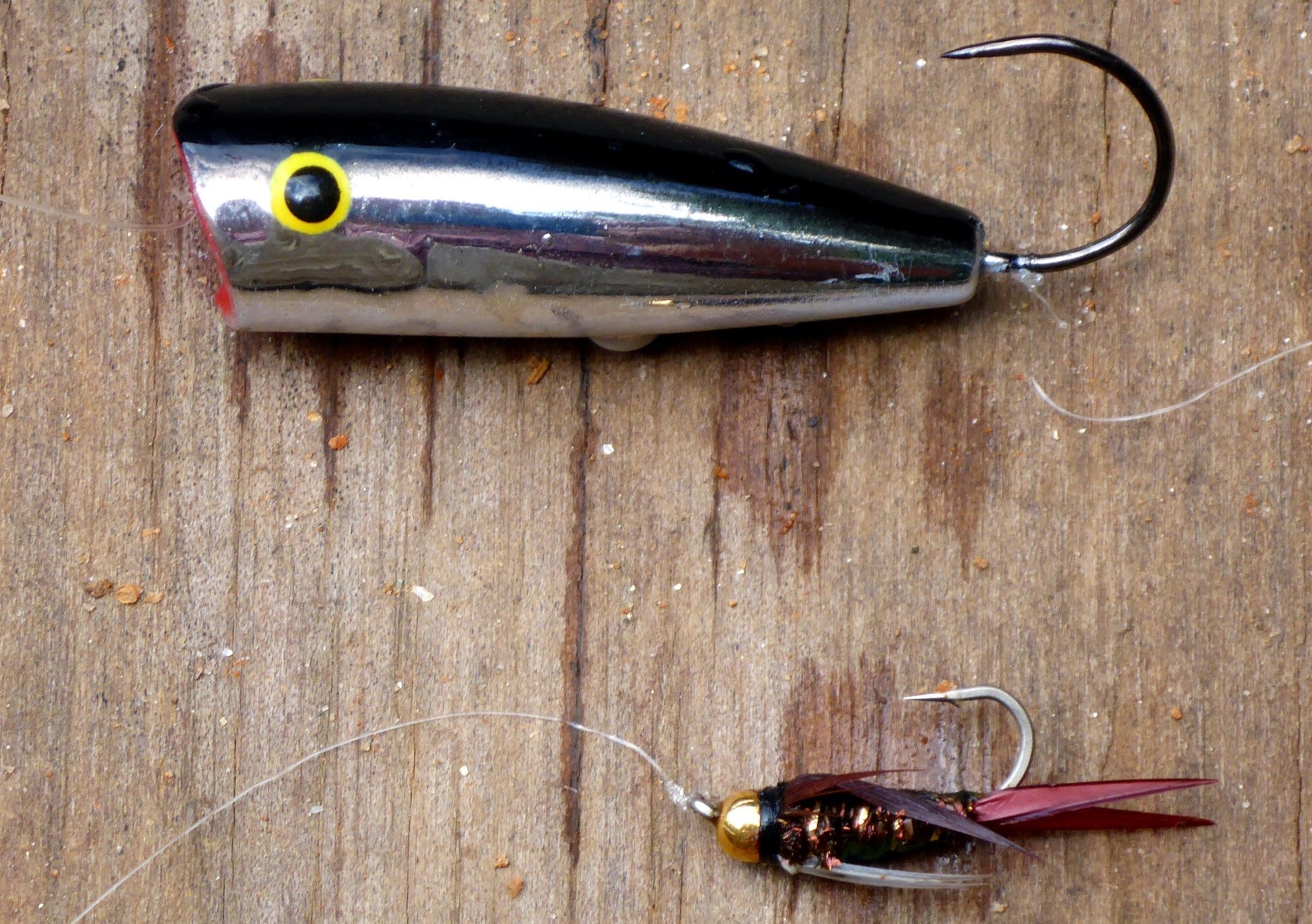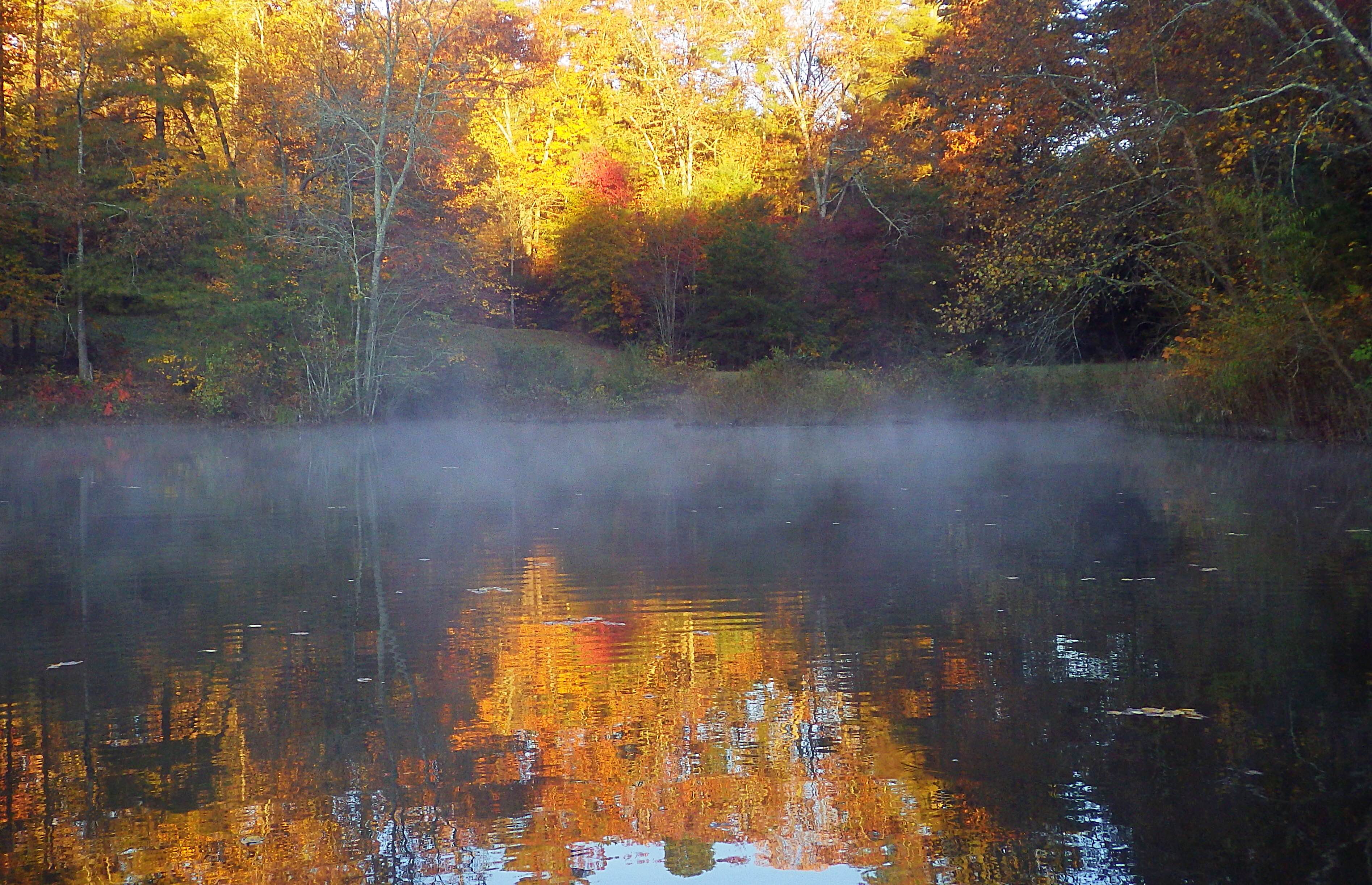- Sep 29, 2022
The Best Artificial Lures and Presentations for Early Autumn Panfish
Casting the right panfish lures to the right kinds of places can produce fun and highly dependable fall fishing action.
The reaction was predictable. I almost knew my lure would get attacked when I cast close to a laydown along a shady bank. I just didn’t know what species it would be. Such is the nature of autumn panfishing with lures. Multiple species hang together, and if you choose the right areas and pick the best artificial lures, the action is often fast.
Bluegills and their closest kin top the list of likely suspects to attack panfish lures, with closest kin including redears, longears, green sunfish, redbreast and various other similar species that are commonly lumped together and called bluegill, bream or sunfish. Other common additions to the fall mix (depending on geography and the nature of the waters you choose) include rock bass, warmouths, crappie, yellow perch, white perch and white bass. You won’t catch all those species in the same waters or with the same approach, but it’s common to catch several, and rare to catch only one.
When I use any of the panfish lures discussed below, I’m seldom fishing for a specific kind of fish. I’m after whatever bites.
Along with picking the best artificial lures, it’s important to focus on the right areas. For ponds, small lakes or creeks, that means working the edges and casting to the bank and to visible cover. If you keep the boat moving or keep walking and try to hit a variety of cover types, it shouldn’t take long to figure out the kinds of areas the most fish are using. For bigger water, a good strategy is to pick a defined cove or pocket and treat it like a smaller body of water.
Terrestrials on Top


Fly-fishermen know. Autumn in prime hopper time. For them, it’s often about brown trout or stream smallmouth bass. However, the same principle applies in even greater measure to ponds or creeks and panfish, and the spin-fishing approach allows you to work lures to imitate the insects’ behavior.
Beginning late in the summer and continuing through fall, grass pond banks get thick with grasshoppers and crickets, and overhanging branches, deadfalls, docks, stumps and more commonly crawl with ants, termites, beetles and other bugs. Whether via a wave, wind gust or faulty step or hop, terrestrial insects often find themselves afloat and scurrying toward shore (at least, they hope they are pointed toward shore).
Bluegills, rock bass, redbreasts and warmouths are just a few of the many kinds of panfish that get programmed to watch the surface this time of year. When something lands, they come to investigate, and if the profile and behavior say “bug,” they commonly attack.
Rebel Critter baits, especially the Crickhopper and the Bumble Bug, are ideal for imitating misplaced terrestrial insects because the silhouette and action match what fish are accustomed to seeing. These little baits produce highly predictable and undeniably fun fishing action this time of year. Even the smallest fish attack insect lures with vigor, and occasionally you’ll be surprised when a big bass beats the panfish to the punch.
The autumn approach with this type of lure is as simple as it is fun. Cast close to the bank or near a piece of shallow cover and let the lure rest on top for at least a few seconds (longer in current because fish will hit it dead drifting on top). If nothing hits, work the bait to imitate a terrestrial insect on the surface either by twitching your rod tip repeatedly to make it dance erratically or by reeling slowly with the rod high, so it wobbles without diving to wake the surface. Twitching suggests a struggling insect. Waking suggests a deliberate swim toward safety. Both are effective, so experiment.
With either retrieve, pause occasionally. Misplaced insects often pause, whether to gain bearings or to rest. Be extra ready when you first start moving the lure after a pause!
Most day’s you’ll identify a zone that produces the bulk of the action – often within 6 or 8 feet of the shore or any cover or while the lure is over a certain depth. Once you find that, don’t continue to work the bait on top all the way to the boat. Don’t just crank it in quickly though. Instead, reel steadily, at a moderate speed, to take advantage of the bait’s crankbait configuration. Most fish will hit on top this time of year, but you’ll pick up some bonus fish with the crankbait portion of the presentation. And on those rare days when most fish are hitting the lure when it is swimming, take that as a clue and try more total cranking presentations!
Popper & Dropper


Only 1 1/4 inches long but with a good, splashy pop, a Rebel MicroPOP-R typically calls up steady action from a variety of species when worked around shallow cover. A lot of fish will only slap at it without fully committing, though. A fabulous way to capitalize on all the interest your little popper drums up and to tap into fast fishing action is to tie a couple of feet of leader to the MicroPOP-R’s hook and tie a fly-fishing nymph to the end of that leader.
Work the rig slowly. Popping it just a time or two and then pausing it. The fish will keep attacking the popper, like always, and some will get hooked. More often, though, the popper will dart under like a bobber. The pop attracts fish, which may or may not slash at it first, but when they see the nymph just dangling there, looking like such an easy meal, they can’t resist grabbing it.
The specific nymph pattern doesn’t seem too critical, as long as it looks buggy. I like a No. 10 or 12 beadhead nymph of some sort because the bead keeps the fly in place well. Good patterns that are widely available in fly shops or online include the Gold Ribbed Hare’s Ear, Prince Nymph and Pheasant Tail.
For rigging, tie the leader to the shaft of the hook. I like 4-pound test, but that’s not critical. Because of the light weight of the MiccroPOP-R, this rig is best fished on ultralight tackle.
Tiny Jigs


Sometimes the panfish aren’t oriented toward the top. That could be due to conditions, like an early cold front delivering bluebird skies, or because fish are relating heavily to aquatic insect nymphs or tiny minnows and staying deeper. Often, it has to do with species mix. Neither yellow perch nor crappie tend to feed on top, so if those are the prevalent panfish species, a subsurface approach will be more productive.
My primary lures for this situation, without question, are tiny jigs that suggest a mix of foodstuff and appeal to a broad range of species. Top jig picks include Bobby Garland Itty Bit series baits and 1/64- or 1/32-ounce Lindy Little Nippers.
Three Itty Bit baits are 1 1/4-inch versions of popular Bobby Garland baits. The Itty Bit Slab Hunt’R, which suggests a tiny minnow and has lively tail action, is my usual first choice. If bluegill and their closest kin are prevalent, I like to use an Itty Bits Jighead. For crappie, perch and rock bass, which have slightly bigger mouths, I like a 1 /32- or 1/48-ounce Crappie Pro Overbite Sickle head.
The Little Nipper is a narrow-bodied feather jig that offers a small profile and is a good bet for getting down a little more, even with a tiny jig, because the sparse body creates minimal water resistance. The feathers move constantly, even when the Little Nipper is suspended beneath a float or held still on a tight line, but the movement is exceptionally subtle.
If the cover allows doing so, I typically fish Itty Bits or Little Nippers tandem, using two loop knots, 18 to 24 inches apart. That allows for longer casts and better control of the bait, makes it easy to test colors and jigs styles to find the fish’s daily preferences, and simply puts twice as many targets down there for the fish. Double catches, which obviously add to the fun, are common.
Best presentations vary, and it’s prudent to let the fish dictate how they like it. My default approach is to cast around cover, let the jigs sink a bit and then work them slowly, either reeling steadily and adding slight snaps or moving the bait mostly with slight upward rod twitches and reeling line between lifts. Steadier movement keeps the bait high. Longer pauses allow it to go deeper. Vertical presentations, just holding the rod steady and twitching it on occasion, much like an ice angler’s approach, can also be highly effective.





